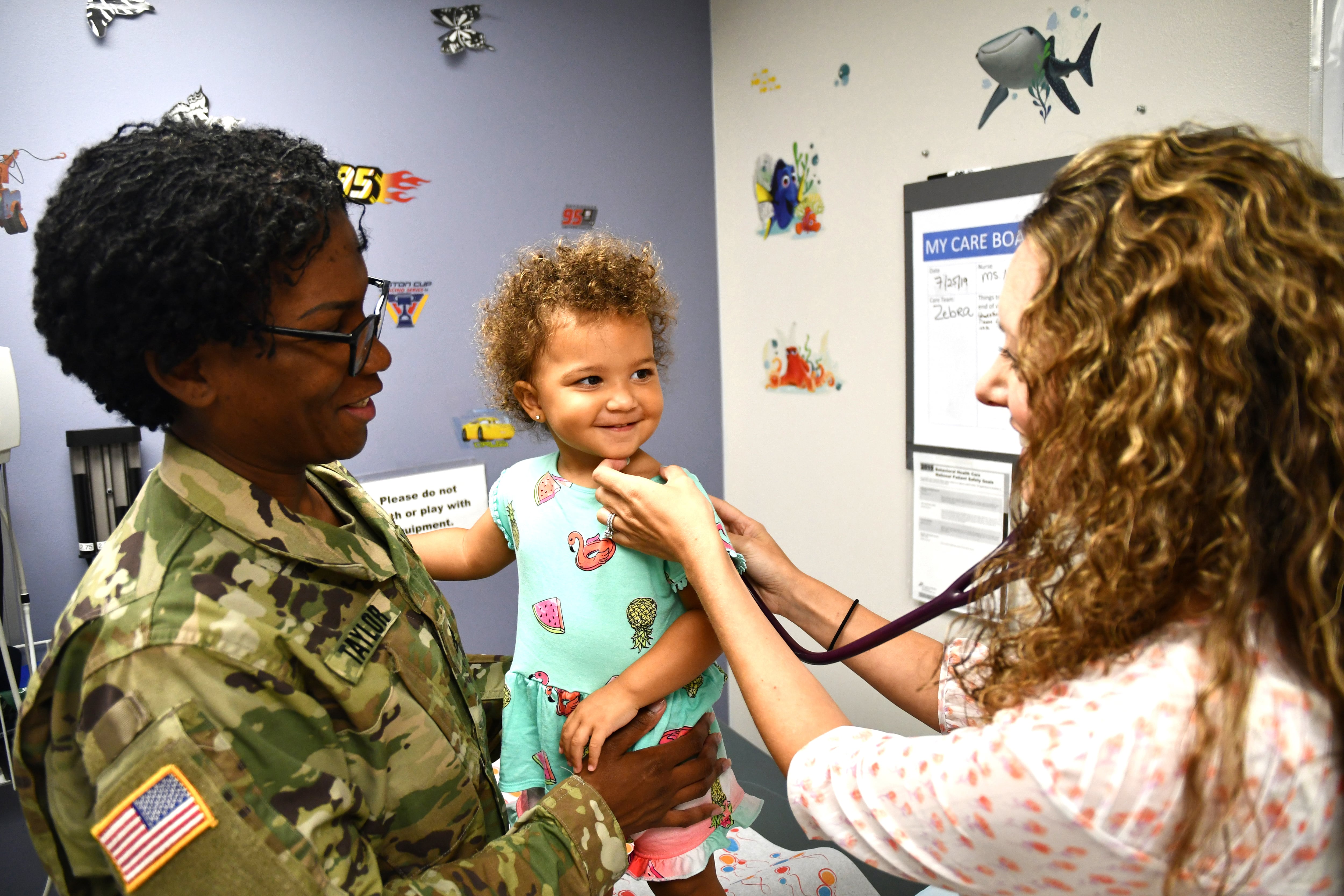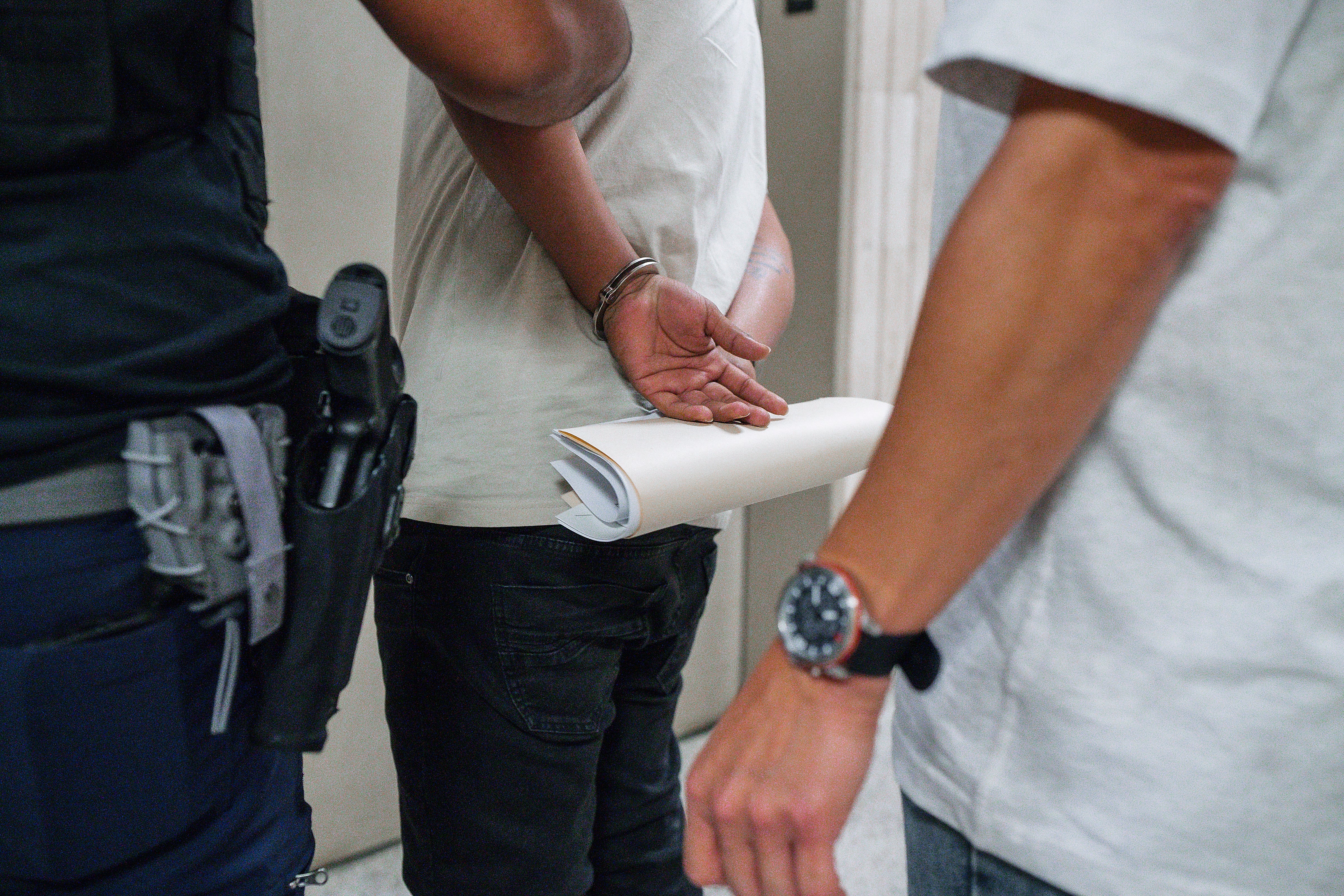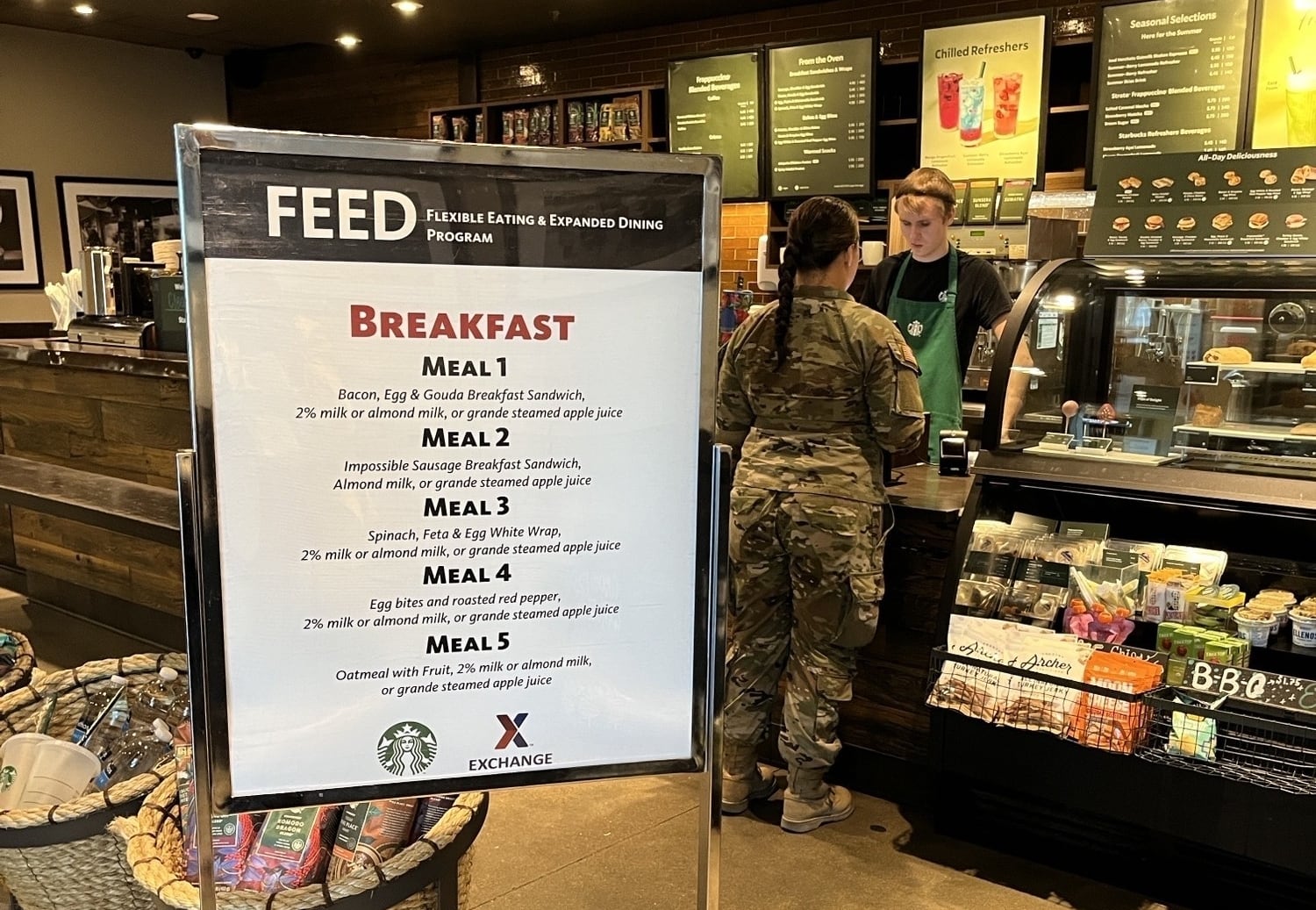Pregnant women at Kadena Air Base in Japan are being notified they won’t be able to deliver their babies at U.S. Naval Hospital Okinawa, the only full-servce medical center on the island, due to a staffing shortage.
Women at Kadena whose estimated due date is from August through November are being given a choice: Either go to a Japanese medical facility or be placed in a “Stork Nesting” program in which they’ll be flown to a location in the continental United States, according to a June 7 memorandum signed by Air Force Lt. Col. Travis C. Russell, chief of the medical staff at Kadena’s 18th Medical Group. The staffing shortage is expected to be resolved by the end of the year, he stated.
Available information indicates this affects women at Kadena, but not elsewhere on Okinawa. It was not immediately clear whether it applies to active duty women.
“Right now, spouses in the community are completely shocked,” said Rachel, an Air Force wife who is one of a group of advocates for dependent health care at Kadena. She asked that her last name not be used.
“Every individual I have spoken to has expressed extreme concern and anger,” she said. “As mothers, our hearts are broken that women are being put in this situation: to choose whether to give birth away from their home or to give birth out in town, where access to care is not a right, and can absolutely be denied.”
Advocates describe the alternative as a “logistical nightmare.” If women choose to have their babies delivered stateside, the must get a referral from their health care provider no later than 28 weeks into their pregnancy and must by off the island six weeks later, at 34 weeks, or at 7½ months.
The memo states the women will be referred to a continental U.S. military treatment facility, but information was not immediately available about whether they would have a choice of a facility that might be close to family, or whether a civilian hospital in the U.S. is an option. And while lodging at government expense is authorized, it’s not clear whether women would be given an advance. The memo states the travelers are required to keep their receipts.
A “non-medical attendant,” such as the spouse, is authorized, but not until four weeks before the delivery, the memo stated. “This may result in time away from family members, and recovery in a hotel type setting,” Russell acknowledged in the memo. Being off island by 34 weeks into the pregnancy means that their spouse or other non-medical attendant won’t be there for the full period of time before delivery, which is generally 40 weeks of gestation.
Elayne Saejung, an Air Force wife who has been an advocate for families on Okinawa, said there are many questions that remain unanswered, such as concerns about pregnant women with young children, including school-aged children, who would need to follow their pregnant mother to the stateside location “or rely on an operational active duty member with irregular work hours.”
Then, she said, there is the issue of getting passports for new babies who will be traveling with their mothers to Okinawa. Saejung, whose background is in public health and health care emergency management, just returned to the U.S. after three years in Okinawa.
RELATED

Rachel said she spoke with one spouse who was given 24 hours to decide whether she would stay on Okinawa or go stateside for delivery. Once the decision is made, it cannot be changed.
“She has young children and a spouse who is on active duty, so leaving the island to give birth did not seem feasible for her,” Rachel said. “She shed tears and she made her decision. We can only pray that the health of her, her child and her family will not be jeopardized.”
In his memo, Russell laid out caveats of getting care in a Japanese medical facility. While these facilities have not been historically used, he said, “the Defense Health Agency maintains confidence in these facilities, especially given Japan’s maternity mortality rate is on par with other developed nations.”
Russell’s memo noted:
♦ Epidurals or spinal anesthesia, common pain relief methods used during labor in the U.S., are used in only about 5% of obstetric cases in Japan, because of cultural and medical practice differences.
♦ While U.S. law requires hospitals to provide care to anyone needing emergency health care regardless of citizenship, legal status or ability to pay, this doesn’t apply in Japan. “Importantly, Japanese law does not require hospitals to accept patients who are in labor, so you may need to seek alternative delivery locations at the last minute,” he stated.
As a public health professional, Saejung said, she wants people to understand that this situation doesn’t absolve Naval Hospital Okinawa of its responsibility under U.S. law to treat anyone needing emergency care, so if any of these women do have an emergency, they are able to go to the emergency room at the hospital.
♦ After a vaginal delivery without complications, women may be required to stay in the hospital for seven to 10 days, compared to usual stays of fewer than 48 hours in the U.S. The length of stay after a cesarean section is also longer.
♦ There’s a language barrier. A translator will be provided to help with communication, but they may not be available 24/7. Thus, there could be periods of time when there’s a language barrier, “which could result in less optimal outcomes,” he stated.
♦ Obstetric appointments may last two to four hours in some facilities, and child care must be arranged, as young children typically aren’t allowed at these appointments.
♦ Japanese facilities accommodate patients with a higher body mass index, but some studies show that women with higher BMIs are at greater risk for complications in Japan, compared to the U.S., Russell noted.
Military leaders on Kadena, including the Medical Group, “are advocates and consistently on the side of the spouses and their patients,” Rachel said. But since medical facilities have come under control of the Defense Health Agency, “there seems to be less power in the hands of local leadership.”
“We would ask the DHA to communicate with local leadership in order to make sure shortages like this do not happen,” she said.
Peter Graves, a spokesman for the agency said it is “fully aware of the situation at Naval Hospital Okinawa and the impact it may have on expectant mothers who utilize the facility.”
“We are working with hospital leadership as well as the leadership of the DHA Region Indo-Pacific to determine the best next steps for those in need,” he said. “We are actively looking for expediting civilian hiring, contract solutions and temporary assignment of military personnel from across the Department of Defense to mitigate the acute shortage of obstetric support for the women in the Indo-Pacific area.”
Information was not immediately available about other U.S. installations in the region that have similar shortages.
Many members of the military community on Okinawa are frustrated because they have long been aware of the staffing shortages and know that dozens of military spouses are qualified medical professionals, said Saejung. It is not entirely clear why they can’t be hired.
In a January interview, the new director of the Defense Health Agency, Lt. Gen. Telita Crosland, noted that the military medical system has to find new ways to deal with medical personnel shortages, which are also being felt in the civilian medical community. She noted, for example, that the United States is projected to fall 250,000 to 300,000 nurses short of available positions.
In a Jan. 24 town hall meeting in Hawaii, Secretary of the Army Christine Wormuth told soldiers and families that everywhere she goes, she hears requests for more access to doctors.
“We want the DHA to recognize the importance of their role in making health care accessible to the dependent population,” Rachel said. “Most of the time, the argument we get back is that military treatment facilities are for military members only. That works when there is available health care off base. But in Japan, that is not the case … and now our mothers and new babies are feeling the brunt of it.”
Karen has covered military families, quality of life and consumer issues for Military Times for more than 30 years, and is co-author of a chapter on media coverage of military families in the book "A Battle Plan for Supporting Military Families." She previously worked for newspapers in Guam, Norfolk, Jacksonville, Fla., and Athens, Ga.





